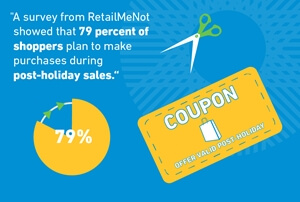Analytics. Business intelligence. Buzzwords, yes, but also concepts that are at the heart of the optimized 21st century business. Today, it’s no longer enough to simply be responsive to changes in consumer behavior, supply chain ecosystems or outside forces – you have to be able to anticipate them. While the goal of forecasting the future isn’t a new business objective by any means, it’s only in the last few years that tools have emerged that enable business users to make actionable predictions based on a confluence of focused, intelligent data.
The Future of B2B Collaboration
The sharp rise of analytics and business intelligence means that companies that drag their feet on implementation and smart utilization could soon be left on the outside looking in to their industries. The digital age offers opportunities for those organizations that leverage data to explore new market ideas and use variables in various systems to their advantage. This is certainly true in the supply chain, where variables exist in spades. This means everything from weather data that affects transportation management to consumer trends that alter order management and communication tactics that inform B2B collaboration movements. Being able to harness data to forecast the potential effects of these variables can help organizations make them work to their advantage.
So how can companies derive the most benefits from upping their business intelligence and analytics game in their supply chain management strategies? And furthermore, how can this be done efficiently, cost-effectively and with lasting benefits? Read on.
Technology is only part of the approach
It’s almost impossible to throw a digital rock without hitting an analytics start-up these days. It’s wonderful to see so many companies working to make legacy processes and guesstimates things of the past, but it’s important to realize that the most effective data-crunching application in the world isn’t worth much if the organization doesn’t know how to use it effectively. As SmartData Collective contributor Ray Major pointed out, an enterprise’s people and processes form the remaining other two-thirds of the equation.
“More advanced implementations of supply chain business intelligence systems include ways to disseminate or push information to the supply chain, customers, vendors and distributors,” Major observed. “Also, easy-to-use mobile applications help companies collaborate internally with key stakeholders as well as customers and suppliers.”
Any two components of the supply chain business intelligence triangle falter without due attention paid to the third. In fact, Major asserted that the technological aspect of the trio is the most costly, from an investment standpoint, while it will almost always have the lowest return on investment. This is due to the fact that applications used for supply chain and order management enhancement are solely dedicated to these tasks, and there is only so much ROI that can be redeemed from a piece of software. The smart use of the application by people and their ability to leverage it to improve processes is where the real, higher-ceiling ROI value lies.
In practical terms, this means doing things like using an analytics tool to establish key performance indicators for aspects of the supply chain process, which stakeholders can use both to evaluate the current functionality of existing workflows and use to drive progress. It also provides companies with a means to standardize and streamline more aspects of back-end operations, which make the job easier for management, administrators and on-the-ground personnel, who have a clearer and more comprehensive picture into the way that their role fits into the whole.
Putting technology and organizational behavior on the same page
The best business intelligence tools facilitate this increasingly necessary convergence. Wired contributor Southard Jones recently wrote about the rising phenomenon of “data discovery” – the ability of a self-service user to utilize data to make smarter observations and actionable decisions. While it is a valuable component of business intelligence, organizations need to be careful to balance it with the bigger picture.
“The trade-off between agility and complete business analytics is disappearing as new technologies bring the speed of data discovery to a full suite of BI tools that everyday business users can easily leverage in their daily lives,” Jones wrote. “The complex process of bringing together different data sources throughout an organization (such as [customer relationship management] and [enterprise resource planning]) is now being automated creating a single, semantic layer of an organization’s data.”
Supply Chain Management
Tools for supply chain management offer the comprehensive, fluid and highly visible information layer that today’s organizations require. Organizations can automate back-end processes like order management and billing, leverage real-time financial reporting, and analyze complex inter-departmental data streams to create a fine-tuned foundation for smarter business decision-making. When using the cloud to house applications and data, a solution also frees up IT personnel from tedious everyday management tasks and allows organizations to concentrate the bulk of its personnel and processes into optimizing the use of emerging analytics technology. This way, ROI will continue to rise.


